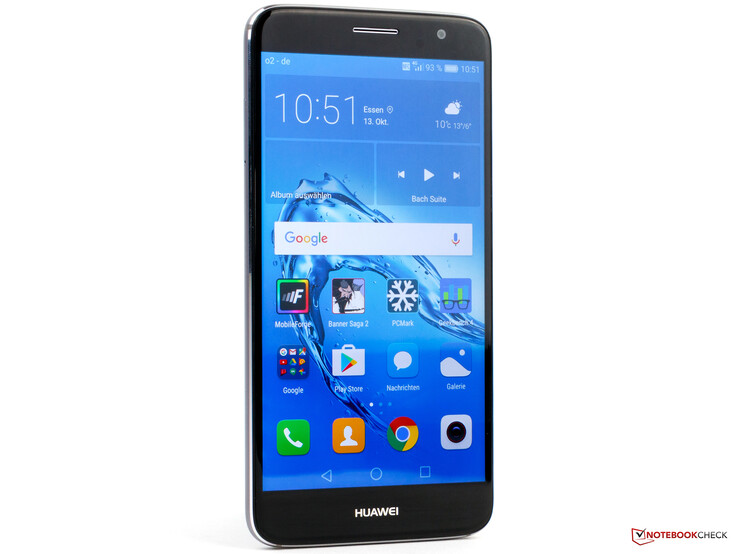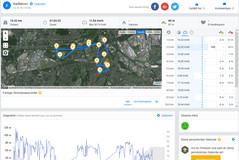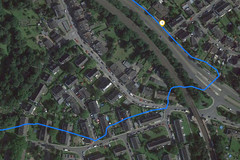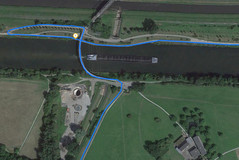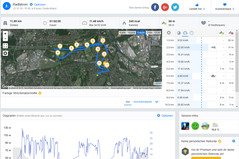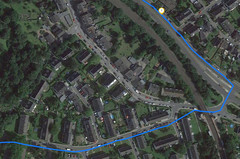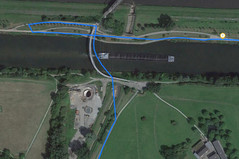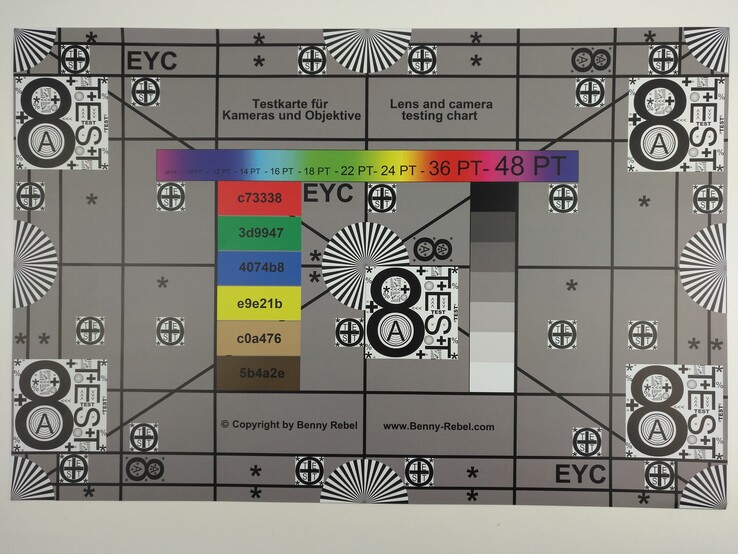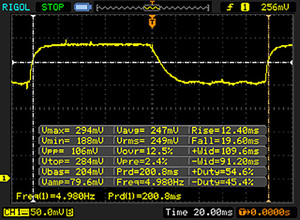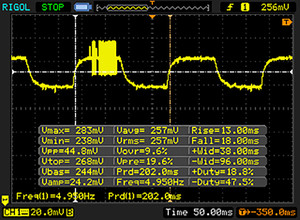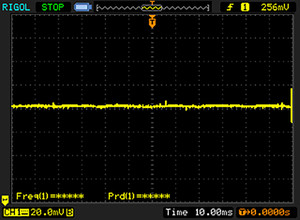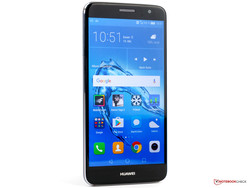Recensione breve dello Smartphone Huawei Nova Plus
I nostri Top 10
» Top 10 Portatili Multimedia
» Top 10 Portatili Gaming
» Top 10 Portatili Gaming Leggeri
» Top 10 Portatili da Ufficio e Business economici
» Top 10 Portatili Premium da Ufficio/Business
» Top 10 Portatili sotto i 300 Euro
» Top 10 Portatili sotto i 500 Euro
» Top 10 dei Portatili Workstation
» Top 10 Subnotebooks
» Top 10 Ultrabooks
» Top 10 Convertibili
» Top 10 Tablets
» Top 10 Tablets Windows
» Top 10 Smartphones
Size Comparison
| Networking | |
| iperf3 transmit AX12 | |
| OnePlus 3 | |
| ZTE Axon 7 | |
| Lenovo Moto Z Play | |
| Huawei Nova Plus | |
| Asus Zenfone 3 ZE552KL | |
| iperf3 receive AX12 | |
| ZTE Axon 7 | |
| OnePlus 3 | |
| Lenovo Moto Z Play | |
| Huawei Nova Plus | |
| Asus Zenfone 3 ZE552KL | |
| |||||||||||||||||||||||||
Distribuzione della luminosità: 90 %
Al centro con la batteria: 485 cd/m²
Contrasto: 970:1 (Nero: 0.5 cd/m²)
ΔE ColorChecker Calman: 4.2 | ∀{0.5-29.43 Ø4.78}
ΔE Greyscale Calman: 4.8 | ∀{0.09-98 Ø5}
Gamma: 2.36
CCT: 7568 K
| Huawei Nova Plus IPS, 1920x1080, 5.5" | OnePlus 3 Optic-AMOLED, 1920x1080, 5.5" | Honor 8 IPS, 1920x1080, 5.2" | Asus Zenfone 3 ZE552KL IPS, 1920x1080, 5.5" | ZTE Axon 7 AMOLED, 2560x1440, 5.5" | Samsung Galaxy A5 2016 Super AMOLED, 1920x1080, 5.2" | Lenovo Moto Z Play AMOLED, 1920x1080, 5.5" | |
|---|---|---|---|---|---|---|---|
| Screen | -8% | -9% | -1% | -20% | 22% | 25% | |
| Brightness middle (cd/m²) | 485 | 419 -14% | 451 -7% | 658 36% | 328 -32% | 378 -22% | 509 5% |
| Brightness (cd/m²) | 481 | 431 -10% | 443 -8% | 633 32% | 334 -31% | 380 -21% | 511 6% |
| Brightness Distribution (%) | 90 | 84 -7% | 93 3% | 93 3% | 88 -2% | 91 1% | 93 3% |
| Black Level * (cd/m²) | 0.5 | 0.4 20% | 0.66 -32% | ||||
| Contrast (:1) | 970 | 1128 16% | 997 3% | ||||
| Colorchecker dE 2000 * | 4.2 | 4.1 2% | 5.4 -29% | 4.9 -17% | 4.6 -10% | 1.95 54% | 2.2 48% |
| Colorchecker dE 2000 max. * | 7.9 | 12 -52% | 9.9 -25% | 9.1 -15% | 14.7 -86% | 3.09 61% | 5.8 27% |
| Greyscale dE 2000 * | 4.8 | 3.3 31% | 6.7 -40% | 5.8 -21% | 2.8 42% | 1.86 61% | 2 58% |
| Gamma | 2.36 93% | 2.1 105% | 2.33 94% | 2.26 97% | 2.29 96% | 2.13 103% | 2.25 98% |
| CCT | 7568 86% | 6550 99% | 8262 79% | 7840 83% | 6612 98% | 6376 102% | 6768 96% |
| Color Space (Percent of AdobeRGB 1998) (%) | 89.38 | ||||||
| Color Space (Percent of sRGB) (%) | 100 |
* ... Meglio usare valori piccoli
Tempi di risposta del Display
| ↔ Tempi di risposta dal Nero al Bianco | ||
|---|---|---|
| 32 ms ... aumenta ↗ e diminuisce ↘ combinato | ↗ 12.4 ms Incremento | |
| ↘ 19.6 ms Calo | ||
| Lo schermo mostra tempi di risposta lenti nei nostri tests e sarà insoddisfacente per i gamers. In confronto, tutti i dispositivi di test variano da 0.1 (minimo) a 240 (massimo) ms. » 85 % di tutti i dispositivi è migliore. Questo significa che i tempi di risposta rilevati sono peggiori rispetto alla media di tutti i dispositivi testati (20.2 ms). | ||
| ↔ Tempo di risposta dal 50% Grigio all'80% Grigio | ||
| 31 ms ... aumenta ↗ e diminuisce ↘ combinato | ↗ 13 ms Incremento | |
| ↘ 18 ms Calo | ||
| Lo schermo mostra tempi di risposta lenti nei nostri tests e sarà insoddisfacente per i gamers. In confronto, tutti i dispositivi di test variano da 0.165 (minimo) a 636 (massimo) ms. » 40 % di tutti i dispositivi è migliore. Questo significa che i tempi di risposta rilevati sono simili alla media di tutti i dispositivi testati (31.6 ms). | ||
Sfarfallio dello schermo / PWM (Pulse-Width Modulation)
| flickering dello schermo / PWM non rilevato | |||
In confronto: 53 % di tutti i dispositivi testati non utilizza PWM per ridurre la luminosita' del display. Se è rilevato PWM, una media di 8101 (minimo: 5 - massimo: 343500) Hz è stata rilevata. | |||
| AnTuTu v6 - Total Score (ordina per valore) | |
| Huawei Nova Plus | |
| ZTE Axon 7 | |
| Samsung Galaxy A5 2016 | |
| Asus Zenfone 3 ZE552KL | |
| Honor 8 | |
| OnePlus 3 | |
| Lenovo Moto Z Play | |
| Geekbench 4.0 | |
| 64 Bit Single-Core Score (ordina per valore) | |
| Huawei Nova Plus | |
| ZTE Axon 7 | |
| Asus Zenfone 3 ZE552KL | |
| Honor 8 | |
| OnePlus 3 | |
| Lenovo Moto Z Play | |
| 64 Bit Multi-Core Score (ordina per valore) | |
| Huawei Nova Plus | |
| ZTE Axon 7 | |
| Asus Zenfone 3 ZE552KL | |
| Honor 8 | |
| OnePlus 3 | |
| Lenovo Moto Z Play | |
| GFXBench (DX / GLBenchmark) 2.7 | |
| T-Rex Onscreen (ordina per valore) | |
| Huawei Nova Plus | |
| ZTE Axon 7 | |
| Samsung Galaxy A5 2016 | |
| Asus Zenfone 3 ZE552KL | |
| Honor 8 | |
| OnePlus 3 | |
| Lenovo Moto Z Play | |
| 1920x1080 T-Rex Offscreen (ordina per valore) | |
| Huawei Nova Plus | |
| ZTE Axon 7 | |
| Samsung Galaxy A5 2016 | |
| Asus Zenfone 3 ZE552KL | |
| Honor 8 | |
| OnePlus 3 | |
| Lenovo Moto Z Play | |
| GFXBench 3.0 | |
| on screen Manhattan Onscreen OGL (ordina per valore) | |
| Huawei Nova Plus | |
| ZTE Axon 7 | |
| Samsung Galaxy A5 2016 | |
| Asus Zenfone 3 ZE552KL | |
| Honor 8 | |
| OnePlus 3 | |
| Lenovo Moto Z Play | |
| 1920x1080 1080p Manhattan Offscreen (ordina per valore) | |
| Huawei Nova Plus | |
| ZTE Axon 7 | |
| Samsung Galaxy A5 2016 | |
| Asus Zenfone 3 ZE552KL | |
| Honor 8 | |
| OnePlus 3 | |
| Lenovo Moto Z Play | |
| GFXBench 3.1 | |
| on screen Manhattan ES 3.1 Onscreen (ordina per valore) | |
| Huawei Nova Plus | |
| ZTE Axon 7 | |
| Asus Zenfone 3 ZE552KL | |
| Honor 8 | |
| OnePlus 3 | |
| Lenovo Moto Z Play | |
| 1920x1080 Manhattan ES 3.1 Offscreen (ordina per valore) | |
| Huawei Nova Plus | |
| ZTE Axon 7 | |
| Asus Zenfone 3 ZE552KL | |
| Honor 8 | |
| OnePlus 3 | |
| Lenovo Moto Z Play | |
| GFXBench | |
| on screen Car Chase Onscreen (ordina per valore) | |
| Huawei Nova Plus | |
| ZTE Axon 7 | |
| Asus Zenfone 3 ZE552KL | |
| Honor 8 | |
| OnePlus 3 | |
| Lenovo Moto Z Play | |
| 1920x1080 Car Chase Offscreen (ordina per valore) | |
| Huawei Nova Plus | |
| ZTE Axon 7 | |
| Asus Zenfone 3 ZE552KL | |
| Honor 8 | |
| OnePlus 3 | |
| Lenovo Moto Z Play | |
| PCMark for Android - Work performance score (ordina per valore) | |
| Huawei Nova Plus | |
| ZTE Axon 7 | |
| Samsung Galaxy A5 2016 | |
| Asus Zenfone 3 ZE552KL | |
| Honor 8 | |
| OnePlus 3 | |
| Lenovo Moto Z Play | |
| WebXPRT 2015 - Overall (ordina per valore) | |
| Huawei Nova Plus | |
| ZTE Axon 7 | |
| Samsung Galaxy A5 2016 | |
| Asus Zenfone 3 ZE552KL | |
| Honor 8 | |
| OnePlus 3 | |
| Lenovo Moto Z Play | |
| Octane V2 - Total Score (ordina per valore) | |
| Huawei Nova Plus | |
| ZTE Axon 7 | |
| Samsung Galaxy A5 2016 | |
| Asus Zenfone 3 ZE552KL | |
| Honor 8 | |
| OnePlus 3 | |
| Lenovo Moto Z Play | |
| JetStream 1.1 - Total Score (ordina per valore) | |
| Huawei Nova Plus | |
| ZTE Axon 7 | |
| Samsung Galaxy A5 2016 | |
| Asus Zenfone 3 ZE552KL | |
| Honor 8 | |
| OnePlus 3 | |
| Lenovo Moto Z Play | |
| Mozilla Kraken 1.1 - Total (ordina per valore) | |
| Huawei Nova Plus | |
| ZTE Axon 7 | |
| Samsung Galaxy A5 2016 | |
| Asus Zenfone 3 ZE552KL | |
| Honor 8 | |
| OnePlus 3 | |
| Lenovo Moto Z Play | |
* ... Meglio usare valori piccoli
| Huawei Nova Plus Adreno 506, 625, 32 GB eMMC Flash | ZTE Axon 7 Adreno 530, 820 MSM8996, 64 GB eMMC Flash | Samsung Galaxy A5 2016 Mali-T720 MP2, 7580 Octa, 16 GB eMMC Flash | Asus Zenfone 3 ZE552KL Adreno 506, 625, 64 GB eMMC Flash | Honor 8 Mali-T880 MP4, Kirin 950, 32 GB eMMC Flash | OnePlus 3 Adreno 530, 820 MSM8996, 64 GB UFS 2.0 Flash | Lenovo Moto Z Play Adreno 506, 625, 32 GB eMMC Flash | |
|---|---|---|---|---|---|---|---|
| AndroBench 3-5 | 81% | -35% | 53% | 8% | 101% | 31% | |
| Sequential Read 256KB (MB/s) | 241.6 | 406.5 68% | 209.4 -13% | 282 17% | 247.5 2% | 408.7 69% | 254.8 5% |
| Sequential Write 256KB (MB/s) | 82.1 | 150.9 84% | 60.4 -26% | 188 129% | 119.3 45% | 153.3 87% | 73.1 -11% |
| Random Read 4KB (MB/s) | 35.64 | 121.1 240% | 22.9 -36% | 74 108% | 34.16 -4% | 137.6 286% | 38.78 9% |
| Random Write 4KB (MB/s) | 30.12 | 16.22 -46% | 11.2 -63% | 7.4 -75% | 31.5 5% | 18.23 -39% | 45.58 51% |
| Sequential Read 256KB SDCard (MB/s) | 41.64 | 78.4 88% | 79.2 90% | 53.7 29% | 74.6 79% | ||
| Sequential Write 256KB SDCard (MB/s) | 33.32 | 51.3 54% | 50.1 50% | 23.59 -29% | 50.6 52% |
| Asphalt 8: Airborne | |||
| Settaggi | Valore | ||
| high | 28 fps | ||
| very low | 29 fps | ||
(+) La temperatura massima sul lato superiore è di 39.2 °C / 103 F, rispetto alla media di 35.2 °C / 95 F, che varia da 21.9 a 247 °C per questa classe Smartphone.
(+) Il lato inferiore si riscalda fino ad un massimo di 33.2 °C / 92 F, rispetto alla media di 34 °C / 93 F
(±) In idle, la temperatura media del lato superiore è di 32.2 °C / 90 F, rispetto alla media deld ispositivo di 32.9 °C / 91 F.
Huawei Nova Plus analisi audio
(+) | gli altoparlanti sono relativamente potenti (87.4 dB)
Bassi 100 - 315 Hz
(-) | quasi nessun basso - in media 28.5% inferiori alla media
(-) | bassi non lineari (15.9% delta rispetto alla precedente frequenza)
Medi 400 - 2000 Hz
(+) | medi bilanciati - solo only 3.5% rispetto alla media
(+) | medi lineari (5% delta rispetto alla precedente frequenza)
Alti 2 - 16 kHz
(±) | alti elevati - circa 5.7% superiori alla media
(+) | alti lineari (3.3% delta rispetto alla precedente frequenza)
Nel complesso 100 - 16.000 Hz
(±) | la linearità complessiva del suono è media (21.3% di differenza rispetto alla media
Rispetto alla stessa classe
» 40% di tutti i dispositivi testati in questa classe è stato migliore, 8% simile, 52% peggiore
» Il migliore ha avuto un delta di 11%, medio di 35%, peggiore di 134%
Rispetto a tutti i dispositivi testati
» 59% di tutti i dispositivi testati in questa classe è stato migliore, 7% similare, 34% peggiore
» Il migliore ha avuto un delta di 4%, medio di 24%, peggiore di 134%
Honor 8 analisi audio
(+) | gli altoparlanti sono relativamente potenti (84.7 dB)
Bassi 100 - 315 Hz
(-) | quasi nessun basso - in media 24% inferiori alla media
(±) | la linearità dei bassi è media (12.1% delta rispetto alla precedente frequenza)
Medi 400 - 2000 Hz
(+) | medi bilanciati - solo only 4.1% rispetto alla media
(+) | medi lineari (5.3% delta rispetto alla precedente frequenza)
Alti 2 - 16 kHz
(±) | alti elevati - circa 11.8% superiori alla media
(±) | la linearità degli alti è media (7.2% delta rispetto alla precedente frequenza)
Nel complesso 100 - 16.000 Hz
(±) | la linearità complessiva del suono è media (28% di differenza rispetto alla media
Rispetto alla stessa classe
» 72% di tutti i dispositivi testati in questa classe è stato migliore, 5% simile, 23% peggiore
» Il migliore ha avuto un delta di 11%, medio di 35%, peggiore di 134%
Rispetto a tutti i dispositivi testati
» 84% di tutti i dispositivi testati in questa classe è stato migliore, 3% similare, 13% peggiore
» Il migliore ha avuto un delta di 4%, medio di 24%, peggiore di 134%
OnePlus 3 analisi audio
(+) | gli altoparlanti sono relativamente potenti (88.6 dB)
Bassi 100 - 315 Hz
(-) | quasi nessun basso - in media 30.9% inferiori alla media
(±) | la linearità dei bassi è media (11.3% delta rispetto alla precedente frequenza)
Medi 400 - 2000 Hz
(+) | medi bilanciati - solo only 4.2% rispetto alla media
(+) | medi lineari (4.9% delta rispetto alla precedente frequenza)
Alti 2 - 16 kHz
(±) | alti elevati - circa 5.6% superiori alla media
(+) | alti lineari (3.2% delta rispetto alla precedente frequenza)
Nel complesso 100 - 16.000 Hz
(±) | la linearità complessiva del suono è media (21.8% di differenza rispetto alla media
Rispetto alla stessa classe
» 44% di tutti i dispositivi testati in questa classe è stato migliore, 8% simile, 48% peggiore
» Il migliore ha avuto un delta di 11%, medio di 35%, peggiore di 134%
Rispetto a tutti i dispositivi testati
» 61% di tutti i dispositivi testati in questa classe è stato migliore, 7% similare, 32% peggiore
» Il migliore ha avuto un delta di 4%, medio di 24%, peggiore di 134%
| Off / Standby | |
| Idle | |
| Sotto carico |
|
Leggenda:
min: | |
| Huawei Nova Plus 3340 mAh | OnePlus 3 3000 mAh | Honor 8 3000 mAh | Asus Zenfone 3 ZE552KL 3000 mAh | ZTE Axon 7 3250 mAh | Samsung Galaxy A5 2016 2900 mAh | |
|---|---|---|---|---|---|---|
| Power Consumption | -36% | -35% | -28% | -29% | -19% | |
| Idle Minimum * (Watt) | 0.49 | 0.57 -16% | 0.78 -59% | 0.83 -69% | 0.64 -31% | 0.96 -96% |
| Idle Average * (Watt) | 1.63 | 1.24 24% | 1.89 -16% | 2.11 -29% | 0.84 48% | 1.64 -1% |
| Idle Maximum * (Watt) | 1.76 | 1.36 23% | 2.02 -15% | 2.12 -20% | 0.87 51% | 1.71 3% |
| Load Average * (Watt) | 2.98 | 5.92 -99% | 5.28 -77% | 3.41 -14% | 6.02 -102% | 2.98 -0% |
| Load Maximum * (Watt) | 4.99 | 10.53 -111% | 5.44 -9% | 5.46 -9% | 10.45 -109% | 5.08 -2% |
* ... Meglio usare valori piccoli
| Huawei Nova Plus 3340 mAh | OnePlus 3 3000 mAh | Honor 8 3000 mAh | Asus Zenfone 3 ZE552KL 3000 mAh | ZTE Axon 7 3250 mAh | Samsung Galaxy A5 2016 2900 mAh | Lenovo Moto Z Play 3510 mAh | |
|---|---|---|---|---|---|---|---|
| Autonomia della batteria | -11% | -31% | -2% | -26% | 4% | 41% | |
| Reader / Idle (h) | 34.1 | 22.3 -35% | 24.8 -27% | 25 -27% | 28.9 -15% | 38.7 13% | 42.3 24% |
| H.264 (h) | 12.2 | 14.1 16% | 8.8 -28% | 15.1 24% | 11.7 -4% | 11.2 -8% | 19.8 62% |
| WiFi v1.3 (h) | 13.7 | 14 2% | 8.3 -39% | 13.3 -3% | 6.9 -50% | 10.4 -24% | 13.7 0% |
| Load (h) | 6.1 | 4.5 -26% | 4.3 -30% | 5.9 -3% | 4.1 -33% | 8.1 33% | 10.9 79% |
Pro
Contro
Lo Huawei Nova Plus è uno smartphone molto buono e ci sono davvero poche pecche. Oltre al luminoso display avrete due fotocamere molto buone. I fanatici dei sefies godranno della fotocamera frontale in particolare. Avrete anche una potente batteria, che attualmente mantiene le promesse e regge per più di un giorno.
Dovrete accettare qualche piccolo compromesso in termini di qualità di costruzione, sebbene sia una critica molto elevata. Sfortunatamente le apps non possono essere archiviate sulla microSD-card ed anche lo slot è relativamente lento. Il Wi-Fi 5.0 GHz dovrebbe essere scontato in questa fascia di prezzo.
Lo Huawei Nova Plus offre un potente pacchetto con buone fotocamere e ampia autonomia.
Possiamo raccomandare il Nova Plus, in quanto è un pacchetto conveniente. Tuttavia, non disdegnate uno sguardo ai concorrenti in questa fascia di prezzo.
Nota: si tratta di una recensione breve, con alcune sezioni non tradotte, per la versione integrale in inglese guardate qui.
Huawei Nova Plus
- 12/02/2016 v5.1 (old)
Daniel Schmidt




